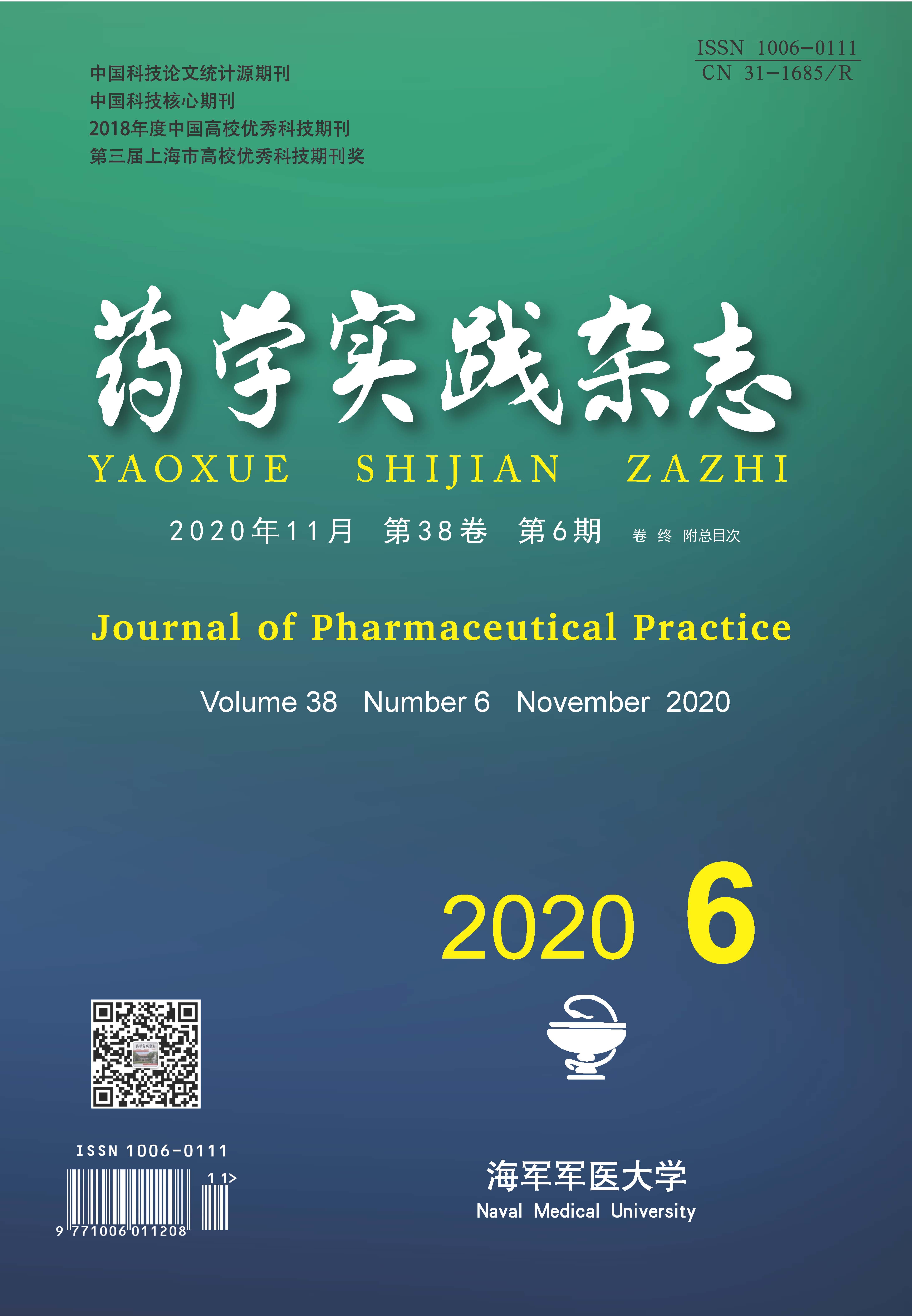-
结直肠癌是最常见的恶性肿瘤之一,在中国,其发病率和病死率均逐年增加[1]。对具有高危因素、病理分期II期及分期更严重的患者,推荐使用术后化疗药物,对于已转移的和无法I期切除的结直肠癌患者则推荐行新辅助化疗[2]。所以,化疗是治疗结直肠癌的主要方法之一,但无论是以氟尿嘧啶、奥沙利铂或伊立替康为基础的术后化疗方案,还是增加贝伐单抗或抗表皮生长因子的对转移性结直肠癌的新辅助化疗方案[3],它们均有明显的药物不良反应及易出现耐药性的缺点[4]。通过拓展结直肠癌化疗药物的种类,可以为患者提供更多的化疗方案以优化治疗效果,降低肿瘤细胞对化疗药物的耐药性。
紫杉醇(PTX)是一种常见的天然抗肿瘤药物,是紫杉烷类药物中的一员。已有研究证明促使细胞有丝分裂停滞是PTX诱导细胞凋亡的主要作用机制,可与β-微管蛋白结合并稳定微管丝[5],干扰细胞分裂中的微管分解过程,使细胞周期停留至G2/M期,从而导致所作用的细胞凋亡、有丝分裂功能障碍,因此具有较强的抗肿瘤活性[6]。但由于PTX水溶性较低,导致其成药性差,限制了其在临床中的应用。此外,PTX还会引起超敏反应、骨髓抑制、外周神经病变等毒副作用[7]。2008年我国批准上市由美国生物科学公司研制的紫杉醇白蛋白纳米粒,部分解决了PTX成药性差、具有多种毒副作用的问题,使PTX成为治疗卵巢癌、乳腺癌、小细胞肺癌和胰腺癌等恶性肿瘤的一线化疗药物。但对于结直肠癌,部分患者仍然存在的过敏反应以及结直肠癌细胞对PTX的耐药性,令其无法广泛应用于结直肠癌的治疗中。据报道,有几种可能的机制解释了这种耐药性,例如,P-糖蛋白的过表达、微管蛋白的突变、异常信号通路的激活[8]和细胞总抗氧化能力的增加[9]等。近年来,许多研究尝试研制PTX新型药物递送系统或针对其耐药机制与其他药物联用等,给PTX治疗结直肠癌提供了依据和可行性方案。笔者对如何增强紫杉醇对结直肠癌化疗疗效的研究进行综述,以期为后续实验研究奠定基础。
HTML
-
由于PTX水溶性较低,成药性差,易产生过敏反应、骨髓抑制等不良反应,限制了其在临床上的应用[7]。纳米药物递送系统不仅能增加难溶性药物的成药性,还能增加药物的效能以及降低其不良反应,作为纳米载体已广泛用于药物的制备过程。
-
脂质纳米囊泡在药物递送中应用广泛,是一种可作为PTX载体的脂质颗粒。有研究表明,以磷脂酰丝氨酸(PS)为基质的脂质纳米囊泡对紫杉醇的包封率达82%,通过Chou-Talalay联合指数法测得载有PTX的脂质纳米囊泡的联合指数(CI)为0.08,说明脂质纳米囊泡不仅增加了PTX的抗肿瘤效应,自身还与PTX有抗肿瘤的协同作用[10]。脂质纳米囊泡是通过静脉途径完成药物靶向递送的,由于它具有增强渗透和滞留药物(EPR)效应,使抗肿瘤药物在局部肿瘤区域累积时间延长[11],提高了治疗效果。印度几位科学家经实验[12]证明了以PS为基础的脂质纳米囊泡携载PTX能够对结直肠癌细胞产生有效的促凋亡作用。当以空载脂质纳米囊泡(PCS-B)、载有紫杉醇的脂质纳米囊泡(PCS-PTX)、游离紫杉醇与空白对照组分组进行细胞周期分析实验时,发现前三者均有促细胞周期凋亡的作用。PCS-B可使得HCT-15细胞停留在G2/M期的母细胞数量较对照组显著增高(P<0.05);且PCS-PTX组中停留在G2/M期的母细胞数量较PCS-B组与游离PTX组均更多(P<0.05)。实验证明PCS不仅是PTX的载体,两者还可以协同促进结直肠癌细胞的凋亡作用。进一步的研究表明,PCS-PTX的IC50较游离PTX约降低99%,PCS-PTX对于耐药性人结直肠癌细胞HCT-15的IC50仅为(9.4±2.0)nmol/L,与游离PTX相比具有统计学意义。该研究同时做了体外溶血实验等,证明了PCS-PTX对于红细胞的安全性,使用Rh-123外排测定验证了脂质纳米囊泡帮助PTX躲避p-gp泵的外排,减少结直肠癌细胞对于PTX的耐药性。在增加疗效、降低副作用的同时,减少了耐药性的发生,具有良好的应用前景。
-
基于聚合物的纳米颗粒是一种具有生物可降解性、长循环性等优势的纳米载药颗粒,常被用作化疗药物的载体[13],天然高分子聚合物(如丝素蛋白)更是具有对人体毒副作用小、易降解、对环境影响小等特点,所以引起越来越多学者的关注[14]。丝素蛋白因结构中的重复疏水域和次要亲水域,而具有良好的韧性、弹性和生物相容性。实验表明[15],使用1-乙基-3-(3-二甲基氨基丙基)碳二亚胺(1-ehyl-3-(3-dimethylaminopropyl carbodiimide),EDC)交联的纤维蛋白纳米颗粒(EDC-FNP)的理化性质可以很好地被控制,包括颗粒大小、zeta电位、药物包封率、结晶率以及药物溶解度等。由于纳米颗粒表面积与体积比的增高,经EDC-FNP运载的PTX溶解度较游离状态提高了10倍以上;并且EDC-FNP较FNP具有更高的药物包封率。EDC-FNP运载的PTX可直接经细胞的内吞作用被摄取,解决了PTX水溶性低的难题,还避免了结直肠癌细胞膜上p-gp泵外排功能,降低了结直肠癌细胞对PTX的耐药性。在体外细胞毒性试验中[16],若将游离PTX与PTX-EDC-FNP分别作用于结直肠癌细胞系CaCo-2,则两者的IC50分别为105、10 μg/ml,可见,经EDC-FNP携带的PTX较游离PTX的IC50降低了90%,证明经EDC-FNP负载后的PTX比游离PTX具有更高的细胞毒性。同时,该试验也测试了EDC-FNP-PTX的理化性质的稳定性与其对红细胞的安全性:在4 ℃的条件下,EDC-FNP-PTX至少在6个月内可以维持其理化性质的稳定;经EDC-FNP-PTX作用的红细胞,其溶血百分率不足4%,保证其对人体红细胞的安全性。
-
纳米乳剂(NE)也是一种有效的药物传送方式。有研究表明,载有PTX的纳米乳剂(NE-PTX)能够通过抑制P-糖蛋白活性、增加肿瘤细胞中的药物浓度等方式降低不同类型肿瘤细胞的耐药性[17]、提高药物热力学稳定性和增加肿瘤细胞膜对PTX的通透性来增加细胞药物的摄取[18],以及增加PTX对肿瘤细胞的细胞毒性和凋亡作用[19]。由于纳米乳剂的包裹使PTX增加了溶解性,通过内吞作用,NE-PTX很容易被结直肠癌细胞吞噬,从而增加PTX的效能,减少了用药剂量,间接降低了PTX对人体可能产生的毒副作用。经实验统计,NE-PTX能够显著增加PTX对结直肠癌细胞HCT-116和HT-29的细胞毒作用,使IC50值降低75%~80%[20];而且,在200 μg/ml的浓度下,NE-PTX对正常细胞没有毒性,也证实了纳米乳液作为PTX载体的安全性。
1.1. 脂质纳米囊泡
1.2. 基于天然聚合物的纳米颗粒
1.3. 纳米乳剂
-
由于紫杉醇可与许多抗肿瘤药物有协同作用,预示着可使用小剂量紫杉醇来获得比既往更大的抗肿瘤效果,既提高了PTX对于结直肠癌的抗肿瘤作用,又降低了PTX的用量,减轻其对患者的不良反应。
-
γ-分泌酶是一种多亚基天冬氨酰蛋白酶复合物,与各种I型跨膜蛋白的膜内蛋白水解有关,至少由4种蛋白质组成,即早老蛋白(presenilin)、呆蛋白(nicastrin)、前咽缺陷蛋白-1(anterior pharynx defective-1,aph-1)和早老素增强子-2(presenilin enhancer-2,pen-2)等,其中,早老蛋白是γ-分泌酶混合物中主要的催化剂[21]。γ-分泌酶是包括Notch, E-cadherin, N-cadherin和CD44[22]在内的多种蛋白在膜内切割所必需的酶。
有研究表明,在有APC抑癌基因突变的小鼠体内,γ-分泌酶抑制剂对Notch蛋白信号的抑制可将小鼠的腺瘤转化为杯状细胞,提示γ-分泌酶抑制剂可能具有抗肠道肿瘤的作用[23]。
日本学者研究发现γ-分泌酶抑制剂增强了结直肠癌SW480和DLD-1细胞系中PTX诱导的有丝分裂阻滞[24]。有实验指出,当单独使用γ-分泌酶抑制剂DAPT时,不能诱导结直肠癌细胞的凋亡;而当DAPT与PTX联合用于结直肠癌细胞时,则开始表现出DAPT剂量依赖性地增加PTX诱导这两种细胞系凋亡的能力。后期使用除DAPT外的其他γ-分泌酶抑制剂与PTX联合作用于结直肠癌细胞,也观察到了上述结果。虽然γ-分泌酶抑制剂具体的作用机制仍未明确,但是仍提示我们:γ-分泌酶抑制剂与PTX的联合应用可能是克服结直肠癌对PTX耐药的一种新的治疗方法。
-
近年来,越来越多的中成药也逐渐被用于肿瘤的化疗。康莱特(KLT)注射液是从中药薏苡仁中提取的有效成分,为双相广谱抗癌药[25]。我国学者研究发现[26],在PTX之前使用KLT注射液可以增强PTX对结直肠癌的细胞毒性及PTX诱导微管蛋白聚合的能力。该研究在4种不同结直肠癌细胞系中分别进行了MTT比色法,测得经KLT注射液预处理后再使用PTX比单独使用PTX抑制的4种肿瘤细胞活性比例均显著增加,且经混合药物分析软件得到在不同KLT注射液与PTX浓度下的CI值均小于1,表明两种药物具有协同效应。在之后的免疫印迹实验及免疫化学分析实验中,也证明了4种结直肠癌细胞系经KLT注射液预处理后再使用PTX能够增强PTX促微管蛋白聚合的能力,如在HCT-106结直肠癌细胞系中,经KLT注射液预处理后再使用PTX的细胞系中的微管蛋白合成率较单独使用PTX的组别明显增加了约20%,其余3个细胞系也均显著提高了PTX促微管蛋白聚合的能力。可见,KLT注射液与PTX联合应用具有较好的临床应用前景。
2.1. γ-分泌酶抑制剂
2.2. 康莱特注射液
-
在PTX耐药性的相关机制研究中,改变细胞信号通路这一研究方向越来越引起人们的兴趣,这些对于转导通路的调节可能是一种新颖的抗肿瘤策略。
-
MAPK信号通路是信号从细胞表面转导至细胞核内部的重要传递者,它与细胞生长和存活的调节息息相关。MAPK信号通路往往在人类恶性肿瘤中,尤其是结直肠癌中被异常激活[27]。MAPK信号通路可以通过激活RAS基因突变、过表达或激活表皮生长因子受体(EGFR)和激活RAF基因突变等机制在人肿瘤细胞的发生中产生作用[28]。
PD98059是MAPK下游调节蛋白细胞外调节蛋白激酶(ERK)的抑制剂,它可以抑制MAPK信号通路的转导。实验表明[29],与PD98059协同治疗可显著增强PTX对结直肠癌SW480与DLD-1细胞系的凋亡作用,使用Hoechst 33342进行核染色可证明增加的凋亡细胞与PD98059有关。通过siRNA转染来敲除SW480与DLD-1细胞系的ERK表达,以直接阻断MAPK信号通路的转导,更加证实了MAPK信号通路的阻断可以增强PTX对于结直肠癌细胞的促凋亡作用,而非PD98059自身其他未知的作用。研究同时指出,MAPK信号通路的阻断会引起P-蛋白下调,以此来降低肿瘤细胞的耐药性,这也从另一方面说明了阻断MAPK信号通路可以增加PTX对结直肠癌细胞的疗效。
-
PI3K信号通路在调节细胞存活、增殖和分化的过程中均起到重要作用,并且也参与了肿瘤细胞对化疗药物的耐药机制[30]。PI3K是由p110a-p85, p110b-p85, p110d-p85和衍生物异二聚体组成,可将磷脂酰肌醇转化为磷酸化的形式。胰岛素、细胞因子、生长因子的各种刺激[31]可使p110亚基产生阳离子,进而将信号转导至下游效应子,例如丝氨酸-苏氨酸蛋白激酶(AKT)、哺乳动物雷帕霉素靶蛋白(mTOR)和p70 核糖体蛋白S6激酶(S6K)。有研究指出[31],低剂量的PTX可上调PI3K信号,尤其增加了结直肠癌细胞中的S6K水平,从而造成了肿瘤细胞对PTX的耐药性。单独使用PTX可诱导10%~20%的结直肠癌SW480和DLD-1细胞系停留在sub-G1阶段,在使用PI3K信号通路抑制剂LY294002后,该比例增加至32%~33%。且随着LY294002的浓度增高,凋亡细胞的比例增加。通过siRNA来敲除AKT和使用mTOR抑制剂雷帕霉素来抑制PI3K的下游信号以确认PI3K阻滞可以增加PTX对于结直肠癌细胞的促凋亡作用,而不是LY294002的其他未知作用。
BEZ235是PI3K/Akt/mTOR信号通路的新型抑制剂,可抑制PI3K和mTOR的活性,并同时抑制mTOR阻止PI3K活性的反馈激活[32-33]。先前的研究[34]表明,BEZ235可有效抑制PIK3CA突变和非突变的结直肠癌细胞系的生长。有文献[20]指出,BEZ235可以增加结直肠癌细胞HCT-116和HT-29对PTX的敏感性,并且两者的联合治疗可以通过细胞周期变化和凋亡途径协同作用,增加结直肠癌细胞HCT-116和HT-29的死亡。通过细胞活性测定,单独使用PTX对于HCT-116与HT-29细胞系的IC50分别为9.72、9.51 nmol/L,当与浓度为25 nmol/L的BEZ235联合使用时,PTX对于这两个结直肠癌细胞系的IC50均下降66%。并且,两者联合使用可使结直肠癌细胞于sub-G1期的细胞量增加了40.5%,即有效促进了细胞系的凋亡。通过阻滞PI3K信号通路,为PTX用于结直肠癌的治疗提供了新思路。
3.1. 丝裂原活化蛋白激酶(MAPK)信号通路
3.2. 磷脂酰肌醇3-激酶(PI3K)信号通路
-
现有治疗结直肠癌的化疗药物毒副作用多、易产生耐药性,许多研究力图寻求新的化疗方案来改变这一现状。经查阅文献,发现PTX这一天然的抗肿瘤药物因其独特的作用机制及可修饰性已成为乳腺癌、小细胞肺癌和胰腺癌等恶性肿瘤的一线化疗药物。近年来,许多学者研究发现,PTX可通过纳米载药系统的装载、与其他药物的结合、阻断相关信号通路等途径,有效、安全地应用到结直肠癌的化疗中,为开发结直肠癌的有效治疗提供新的理论依据和治疗策略。







 DownLoad:
DownLoad: